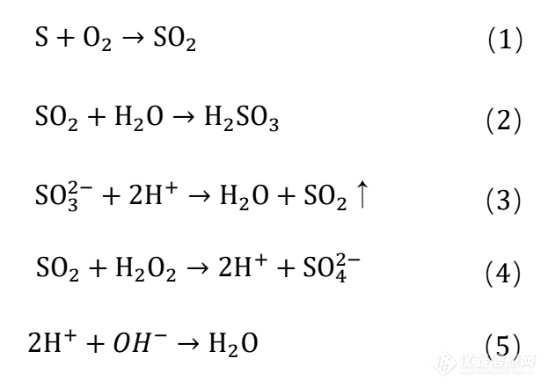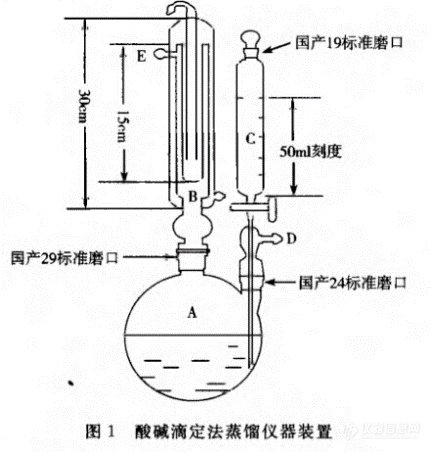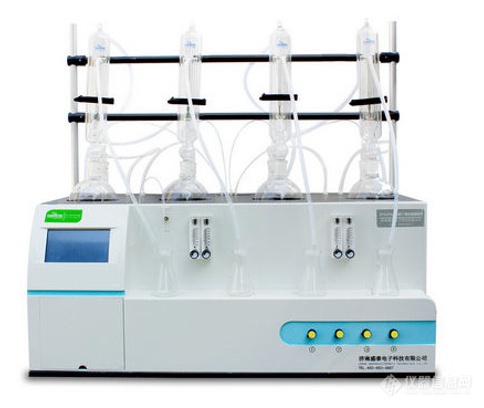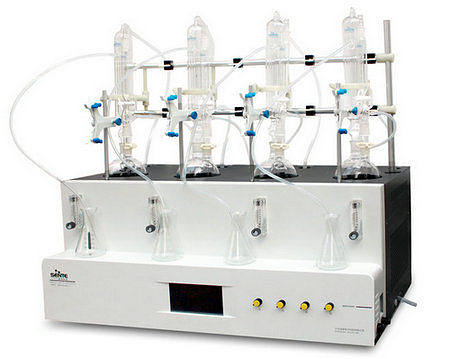[Introduction] Starting from the 2015 edition of the Chinese Pharmacopoeia, there are clear requirements for the residual amount of SO2 in Chinese herbal medicines and decoction pieces. Although the abuse of sulfur fumigation can prevent corrosion and enhance color, it will affect the efficacy of the medicine and cause great harm to human health.
In the pharmaceutical field, the "sulfur fumigation method" is often used for the maintenance of traditional Chinese medicine. The proper use of sulfur fumigation can prevent powdery medicines and flower medicines from being infested with insects and mildew; for animal medicines, it can also prevent protein from deteriorating and reducing the efficacy. However, if used improperly, it will cause excessive SO2 residues, which will not only affect the efficacy of the medicine, but also cause great harm to human health. Therefore, the "Chinese Pharmacopoeia" has clear requirements for the residual amount of sulfur dioxide.

The chemical reaction equation in the figure shows the process by which the "sulfur fumigation method" causes harm to the human body and the detection principle of the sulfur dioxide detector.
(1) Sulfur S burns in O 2 to produce sulfur dioxide SO 2 . (2) When the medicinal material comes into contact with sulfur dioxide, the water H 2 O in it reacts with it to produce sulfurous acid H 2 SO 3 . Sulfurous acid can irritate the throat and stomach, and also has a sour and bitter taste. (3) During instrument detection , the hydrochloric acid HCl added is a strong electrolyte, and the hydrogen ions H + in it can combine with the sulfite ions SO 3 2- to produce sulfur dioxide SO 2 . (4) SO 2 is then blown into a conical flask filled with hydrogen peroxide H 2 O 2 by a stream of N 2 nitrogen , and the sulfur element S is oxidized into a relatively stable +6-valent sulfate ion SO 4 2- . (5) When the generated sulfuric acid ionizes and produces H + and is consumed, the methyl red indicator will indicate the titration endpoint, and the consumed OH - (NaOH) can be used to calculate the residual amount of sulfur dioxide .
The sulfur fumigation method is included in the 1995 edition of the Pharmacopoeia, which includes six types of standard Chinese medicinal materials and their decoction pieces, including Chinese yam, Achyranthes bidentata, Angelica dahurica, Aconite root, Honeysuckle and Pueraria root. In the 2005 edition of the Pharmacopoeia, there is no corresponding standard. In the 2010 edition of the Pharmacopoeia, the "acid distillation iodine titration method" was added to determine the sulfur dioxide residue, but the residue limit standard was not specified. The 2015 edition of the Pharmacopoeia, Part IV, " 2331 Determination of sulfur dioxide residues " not only provides three detection methods, but also stipulates that 10 varieties such as Codonopsis pilosula and Achyranthes bidentata should not exceed 400 mg/kg, and the remaining varieties should not exceed 150 mg/kg. However, relevant standards for preparations containing Chinese medicine raw powder have not yet been established.
The sulfur dioxide detector is an improvement based on the device given in the pharmacopoeia (as shown below, from the pharmacopoeia). The 2015 edition of the "Chinese Pharmacopoeia" stipulates three methods for detecting sulfur dioxide: acid-base titration, gas chromatography and ion chromatography. Gas chromatography and ion chromatography have high sensitivity and strong specificity, but the instruments and equipment are expensive, which is not conducive to the promotion and use of grassroots drug testing systems. The titration method has a simple device and low cost. However, the pharmacopoeia only describes the glass instrument device of the method. In addition to the glass device, it is also necessary to equip it with a magnetic stirrer, an electric heating jacket, a titration platform, a nitrogen device with a flow meter, etc., and it needs to be assembled. During use, the nitrogen flow rate may be unstable, the electric heating jacket may be unevenly heated, the instrument device is prone to leaking, the liquid is prone to violent boiling, and it is easily affected by cooling water. This will result in poor parallelism and low recovery data, which will directly affect the accuracy of the test results.

Therefore, manufacturers have designed some instruments that meet the pharmacopoeia standards for the determination of SO2 residues. This type of instrument integrates all the necessary functions for detection, and has been intensively and miniaturized in structure. The use of sulfur dioxide detectors reduces system errors and facilitates commercial applications.
The editor of Instrument Information Network has compiled some high-quality brand instruments for reference by users such as Chinese medicine inspection and testing, research and development and production enterprises, and Chinese medicine colleges and universities who need to detect the residual sulfur dioxide in Chinese medicinal materials and Chinese herbal medicines, as well as the majority of pharmaceutical workers.
1. Jinan Shengtai Electronics - ST107N1 Fully Automatic Sulfur Dioxide Detector

Shengtai ST107N1 fully automatic sulfur dioxide analyzer can be used to detect the sulfur dioxide residue in Chinese herbal medicines and slices in the methods specified in the Chinese Pharmacopoeia. The instrument adopts an integrated design, with automatic acid addition and automatic timed distillation through the LCD screen; built-in compressor cooling circulation system to save water resources; nitrogen blowing control built-in four-way rotor flowmeter, flow control range: 60-600 mL/min; far-infrared ceramic heating, the power is single-hole monotonic; magnetic stirring, automatic titration, automatic result calculation and other multi-function integration. The number of samples that can be tested simultaneously is 1-4.
Recommended users: Provincial and municipal drug testing institutes, Chinese medicine research institutions, well-known pharmaceutical companies, etc. for large-scale testing.
2. Jinan Shengtai Electronics - ST107-1RW Chinese Medicine Sulfur Dioxide Tester
ST107-1RW is completely based on the method of "Chinese Pharmacopoeia", and actively develops an intelligent instrument that integrates far-infrared heating, nitrogen blowing control (single hole monotony), magnetic stirring, built-in compressor forced refrigeration, and receiving. It solves the various drawbacks of traditional laboratories in sulfur dioxide testing, making the work more efficient and intelligent. This product has been used by provincial and municipal drug testing institutes in China, and the feedback is excellent!
Recommended users: Provincial and municipal drug testing institutes, Chinese medicine research institutions, well-known pharmaceutical companies, etc. for large-scale testing.
3. Jinan Shengtai Electronics - ST107-1P Chinese Medicine Sulfur Dioxide Tester
ST107-1P Chinese medicine sulfur dioxide tester, this product has multifunctional design features such as far-infrared ceramic heating, closed internal circulation air cooling mode, nitrogen blowing control, magnetic stirring, etc. It is simple to operate and easy to use, and is deeply loved by front-line operators.
Applicable occasions: Various traditional Chinese medicine companies, where the number of samples processed continuously per day is less than five groups (20 samples).
Please leave us a message
Jinan Shengtai Electronic Technology Co., Ltd. is a high-tech enterprise specializing in the research, development, production and sales of new laboratory analytical instruments, online atmospheric monitoring equipment and laboratory intelligent pretreatment equipment.
Log in to view more information
Log in to view more information



